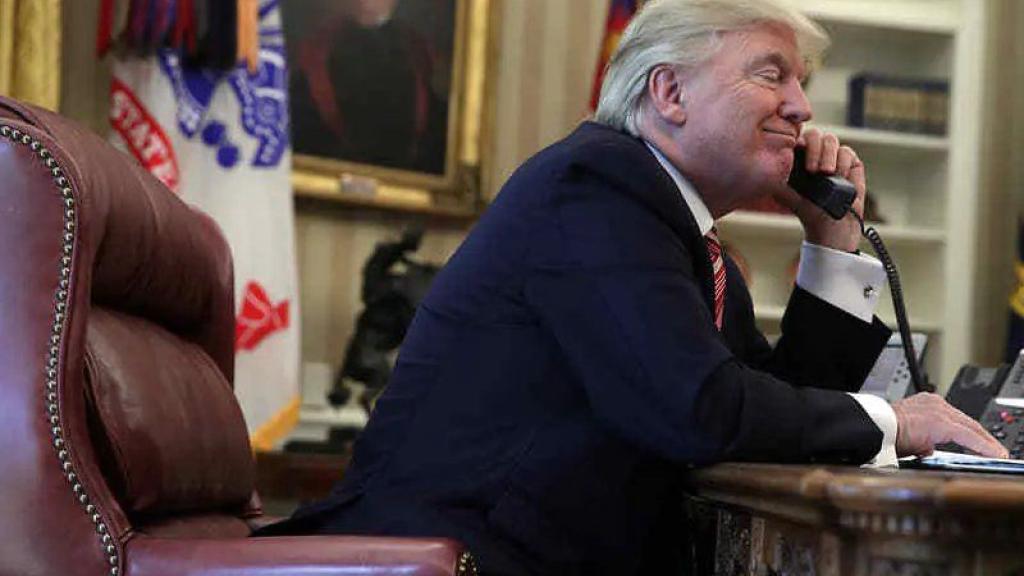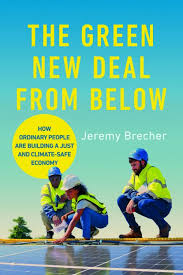Boris Kagarlitsky: ‘Do not include me in any prisoner exchange lists!’

Translation by Dmitry Pozhidaev for LINKS International Journal of Socialist Renewal.
Recently, discussions about another exchange have intensified.
It is still unclear who Russian political prisoners are to be exchanged for, but there is already an active debate over who should be included in the prisoner exchange lists and who should not. I have stated several times, and I will repeat it once again, that I do not wish to participate in such exchanges and ask not to be included in these lists. I see no sense or benefit in emigrating. If I wanted to leave the country, I would have done so myself. But I have no intention of leaving my homeland, and if staying means being in prison, then I will stay in prison. After all, imprisonment is a normal professional risk for a left-wing politician or social scientist in Russia, one that must be accepted when choosing this path. It is like being a firefighter or a rescuer — just part of the job, which I have done and will continue to strive to do as conscientiously as possible.
Since ancient times, exiling dissident citizens has been a form of political repression. And if we are fighting for freedom, then such repression, even in this softer form, must be condemned. Political prisoners must be fully freed — all of them — and in their homeland.
It is said that some participants in the previous exchange were taken out of Russia without their consent. I do not know what truly happened, but I want to make it clear: if anything like that is attempted with me, I will consider it an act of kidnapping. I will file a lawsuit against any foreign government as accomplices to this crime if they attempt to accept me against my will.
I am grateful to my family for their support and understanding, as well as to the many people who have written to express their approval of my decision. But this is not just about me. There are broader issues that need to be addressed.
There is a danger in replacing the fight for the complete release of all political prisoners (which would not only be a humane act but also a step toward transforming the moral climate in the country) with the compilation of exchange lists aimed at freeing a few dozen relatively well-known individuals, while hundreds or even thousands of other prisoners of conscience remain behind bars. Moreover, those compiling the lists take it upon themselves to decide who will walk free and who will stay in prison. This is unjust and undemocratic, contradicting the very principles for which we make sacrifices. The only correct demand is the release of all participants in non-violent political protests and all those arrested for exercising their constitutional right to criticise the authorities' decisions.
There is another important factor that must not be forgotten. Political prisoners are not only a reality in Russia. Everything happening to us carries global significance. If dictators worldwide realise that political prisoners are a valuable resource that can be successfully exchanged or sold, they will work to increase their “exchange fund”. They will imprison even more people. Meanwhile, the goal must be to make it unprofitable for states to have political prisoners, ensuring that repression becomes too costly for ruling circles. This was the case in the late 20th century, when democratisation processes unfolded not only in the former Soviet bloc countries but also in other regions of the world. We know that this democratisation was extremely superficial and did not challenge the dominant position of the elites. Nevertheless, it was a step forward. Now, we are witnessing a reversal of these processes everywhere. This is precisely why it is crucial to fight not for the release of individual high-profile political prisoners but for an end to political repression as such.
Of course, there are different situations, and in some cases, exchange is the only available means to save a person. The conditions under which political prisoners are held vary widely. I am well aware that my situation is far from the worst in comparison. For this reason, I do not presume to decide for others or present my personal opinion as a universal principle. However, I would recommend, first, that those political prisoners who have the physical and moral strength to continue the struggle refuse to participate in exchanges. Second, I ask the organisers of exchanges and those compiling lists to include only those prisoners who have explicitly agreed to accept freedom at the cost of being exiled from the country.
In conclusion, I will say: whatever choice we make, we must never forget that our goal is freedom and rights for everyone — not only for those behind bars but for those subjected to other forms of oppression in Russia and around the world.
The Trump effect

First published in Russian at Rabkor. Translation by Dmitry Pozhidaev for LINKS International Journal of Socialist Renewal.
Alas, I must begin this article with inevitable self-criticism. When the Democrats in the United States replaced the ageing [President Joseph] Biden with the youthful and elegant Kamala Harris, I, like many others, concluded that the return of Donald Trump to the White House could be prevented. Of course, I can now justify myself by pointing out that, being in prison, I did not have sufficient access to current information and could not follow all the twists and turns of the electoral race.
However, the problem is much deeper. I underestimated the scale of bureaucratic inertia among the “reasonable” camp (Democrats, liberals, leftists and all those who know for sure that the Earth is round and that humans evolved from ancient primates), as well as the degree of demoralisation and demobilisation among the masses, tired of two decades of empty politically correct chatter. I thought that the looming real threat would force the political apparatus to mobilise beyond the usual electoral measures and that the masses, dissatisfied with the current state of affairs but unwilling to return to the past, would awaken from apathy. The election results show that the mere threat of a reactionary turn was not enough. Liberals and liberal leftists are now doomed to reap the fruits of their catastrophic policies, the dire consequences of which many have already written about — from Thomas Frank to the author of these lines. But importantly, this will affect not only the United States but the entire world.
What has changed since 2016?
But is the danger really that great? After all, Trump was already in power from 2016 to 2020, and nothing terrible happened. Strictly speaking, nothing happened at all. Even the promised wall along the Mexican border was not built. But the fact is that over the past 4-5 years, the political situation has changed not only in the United States but worldwide, including in Russia.
In 2016, it was possible to gloat over Trump’s victory: “These are the worthy fruits of their wickedness.”1 The Democratic Party apparatus, through manipulation and falsification, suppressed the activists’ rebellion, eliminated the threat of a “left turn”, and derailed Bernie Sanders’ candidacy, ultimately resulting in Trump in the White House. Moreover, many disgruntled Sanders voters supported Trump back then. A millionaire from New York played the role of a protest candidate for the people, partly in spite of his own views and plans.
If you think the same thing happened in 2024, you are deeply mistaken.
Over the years, a revanchist coalition has formed around Trump, uniting all varieties and sorts of reactionary forces that seemed to have been rejected by the history of the 19th and 20th centuries. From opponents of revolutionary theory to provincial isolationists who believe that the US entry into the war against [Adolf] Hitler was a fatal mistake. The inertia of the protest that arose in 2016 has been successfully exploited by Trumpists, but the social program the winners are preparing to implement will primarily harm those who voted for the jovial Donald. It must be admitted that the US’s incomplete and chaotically constructed social policies are inadequate, but dismantling them will make the situation even worse. The hardworking “rednecks” who believe they can achieve anything through their labour, will soon feel the consequences of their choice.
What does this mean for us?
If Russian officials and propagandists who praised Trump hope he will solve their problems (primarily concerning Ukraine), they are, of course, mistaken. Trump’s isolationism (and that of his business colleagues), combined with his manic drive to start a major trade war with China, promises Russia nothing good. Since Russia cannot be a US ally in this trade war, it will inevitably become an adversary.2 This means seeking partners not only in China but also in Western Europe, with which Moscow (unlike Beijing) has burned its bridges. However, regardless of how international events unfold, the Russian bureaucracy is tempted to freeze decision-making until spring 2025, when the new administration in Washington will finally take office. It is clear that during this time, domestic affairs will become even more entangled, and contradictions will deepen.
What could counteract this situation?
First, the worsening of economic problems and rising inflation, which the Central Bank is trying to curb by raising the key interest rate to an exorbitant 23–25%, stifling demand in non-military sectors.3
Second, pressure from “brotherly China” that, on the eve of a potential trade war with the US and the loss of part of the US market, is particularly interested in resuming railway transit of its goods to Europe via Russia and Ukraine. This means inevitable “coercion to peace” by Chinese
“brothers”.
Finally, third, the sharpness of contradictions within the Russian elite itself. These contradictions are accumulating and intensifying, without resolution. Moreover, they concern far more than just foreign policy.
What does this mean for the future?
In 2016, both the liberal establishment and liberal left received a very serious lesson. But they did not learn from it. Worse, they doubled down on implementing principles of political correctness against the backdrop of dismantling the welfare state and pursuing market reforms. The result has been an objective intensification of class contradictions, with no political representation for the interests of the lower classes. This gap made it possible for the growth of right-wing populism, exploiting mass discontent but directing it not against dominant economic interests, but against ethnic minorities, liberal intellectuals, external enemies, and so on. Of course, there is nothing new here. This is exactly how fascists in Italy and Nazis in Germany ran their campaigns in the 1920s — and successfully so. But there are two significant differences.
The first is that in the 1920s, there was a strong leftist movement represented by Communists and social democrats. Yes, they quarrelled and obstructed each other. But they were strong and popular. Today, no such movement exists.
The second difference is that in the 1930s, the far right managed to implement a program of regulating capitalism. Now, however, their program boils down to economic protectionism combined with creating a “free market for their own”. At best, they might remove cheap migrant labour from the workforce and close markets to cheap Asian goods. Such a program will not work.
The paradox is that Trumpist economic policy is likely to destabilise global and US capitalism. Theoretically, this (along with the demoralisation of the left and classic liberals) potentially creates space for new class-based left forces. But potential and realisation are two different things. And let us not forget the prophecy of the Strugatsky brothers: “After the grey ones come the black ones.”4 If the political vacuum representing the working majority is not filled by an adequate leftist force, the consequences will be tragic.
And if anyone thinks “the worse, the better,” they are also mistaken. Recall the slogan of the German Communists in 1932: “Lass Hitler kommen, nach kommen wir” (“Let Hitler come, we will come after”). Unfortunately, the price of such illusions can be unbearably high.
- 1
“These are the worthy fruits of their wickedness” (original: «Вот злонравия достойные плоды») is a quote from the 18th-century comedy The Minor (Недоросль) by Russian playwright Denis Fonvizin. It is spoken by one of the characters to describe the brutish selfishness and crudeness of the poorly educated minor from the country gentry, who mistreats his parents — a consequence of their own wickedness in raising him.
- 2
Kagarlitsky analyses Russia’s limited political options, given the irreconcilable positions of the US and China, in his previous interview on LINKS Boris Kagarlitsky on the US elections, Trump, peace talks and prospects for world war. There he argues that any rapprochement with the US would require one very important condition: that Russia become a key US ally in the fight against China. But for the Russian economy, which has grown increasingly dependent on China, a pivot to the West would be catastrophic, economically and geopolitically.
- 3
Kagarlitsky refers to the decision of Russia’s central bank in October to raise the key rate to 21% to rein in higher-than-forecast inflation. The economic community agrees that the rate is likely to be raised again in the near future.
- 4
The quote is from the Strugatsky brothers’ novel Hard to Be a God (Трудно быть богом): «Там, где торжествует серость, к власти всегда приходят черные», which translates to: “Where mediocrity triumphs, the blacks always come to power.” In the novel, “greyness” symbolises mediocrity and complacency, while “the blacks” refers to a fictional clerical reactionary order that established a brutal dictatorship characterised by mass murders and pillaging.



